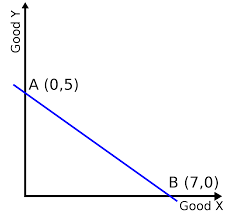Budget Constraint (Economics) - Explained
What is a Budget Constraint?
- Marketing, Advertising, Sales & PR
- Accounting, Taxation, and Reporting
- Professionalism & Career Development
-
Law, Transactions, & Risk Management
Government, Legal System, Administrative Law, & Constitutional Law Legal Disputes - Civil & Criminal Law Agency Law HR, Employment, Labor, & Discrimination Business Entities, Corporate Governance & Ownership Business Transactions, Antitrust, & Securities Law Real Estate, Personal, & Intellectual Property Commercial Law: Contract, Payments, Security Interests, & Bankruptcy Consumer Protection Insurance & Risk Management Immigration Law Environmental Protection Law Inheritance, Estates, and Trusts
- Business Management & Operations
- Economics, Finance, & Analytics
What is a Budget Constraint?
A budget constraint indicates all the combinations that a consumer can purchase given the price of the goods and the amount of funds (budget).
Generally, this means choosing some combination that that meets the consumers needs optimally based upon the budget constraint.

The budget constraint graph shows all of the possible combinations of goods that will exhaust the budget.
Anything outside the constraint is not affordable, because it would cost more money than is in the budget.
How to Calculate the Budget Constraint?
Step 1: The equation for any budget constraint is:
Budget = P1 × Q1 + P2 × Q2
where P and Q are the price and quantity of items purchased and Budget is the amount of income one has to spend.
Step 2. Apply the budget constraint equation to the scenario.
Step 3. Using a little algebra, we can turn this into the familiar equation of a line:
y = b + mx
Step 4. Simplify the equation.
Step 5. This equation fits the budget constraint.
Related Topics
- Self Interest
- Cost-Benefit Analysis
- Enlightened Self-Interest
- Fisher's Separation Theorem
- Ratchet Effect
- Total Utility (Economics)
- Efficiency Principle
- Expected Utility
- Subjective Theory of Value
- Positional Goods
- Utilitarianism
- Indifference Curve
- Time Preference Theory of Interest
- Incentives
- Marginal Benefit
- Diminishing Marginal Utility
- Sunk Costs
- Production Possibilities Frontier
- Law of Diminishing Returns
- Economic Efficiency
- Efficiency Theory
- Productive Efficiency
- Capacity Utilization Rate
- Allocative Efficiency
- Pareto Efficient
- Comparative Advantage
- Criticisms of the Economic Approach
- Behavioral Economics
- Normative Economics
- Positive Economics
- Invisible Hand
- Sunk cost